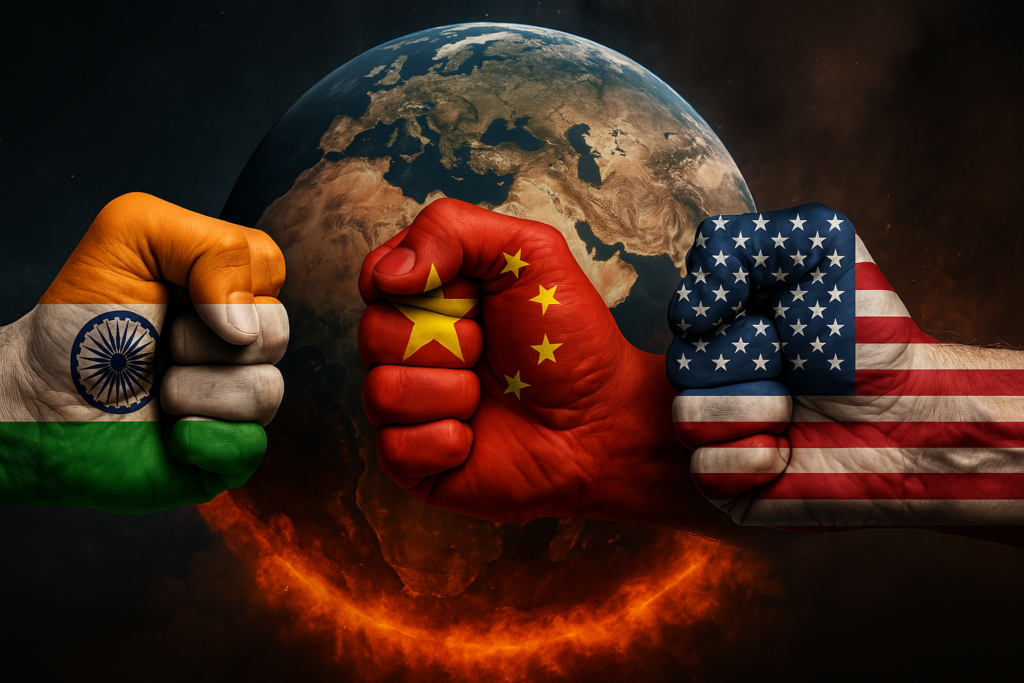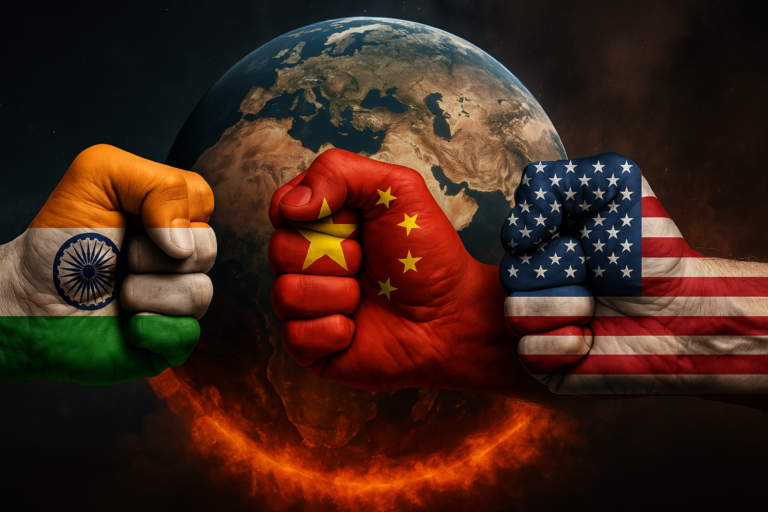
The evolving power dynamics between India, China, and the U.S. shape global stability and economic growth.
The power struggle between India, China, and the U.S. is reshaping global dynamics. As economic and geopolitical shifts unfold, these three nations play a crucial role in international stability and growth.
Strengthening Ties Between India-China-U.S.
India and China have deep-rooted historical and cultural ties. Indian Prime Minister Narendra Modi emphasized this, stating, “Our ties have been extremely strong with deep cultural connections.” Despite past tensions, diplomatic efforts continue to improve relations. Read more on India-China relations. China remains one of India’s largest trade partners, reflecting mutual economic interdependence (CGTN).
Economic Contributions of India-China-U.S.
India and China together account for a substantial share of global economic growth. Historically, these two nations dominated world trade and continue to expand their economic influence (Visual Capitalist). India’s projected GDP growth, expected to reach $7.3 trillion by 2030, positions it as the third-largest global economy (India Today).
Changing Globalization Trends
The globalization model is shifting. U.S. Vice President JD Vance stated that developing nations now compete in high-value sectors instead of just low-cost manufacturing (Geopolitical Economy). This shift challenges Western economies, creating economic realignments and new alliances.
China’s Technological Advancements and Strategic Concerns
China’s rapid technological progress raises strategic concerns. Chinese authorities delayed approval for BYD’s Mexico plant due to fears of U.S. technology leaks (Financial Times). Such decisions highlight the growing emphasis on technological sovereignty and national security.
India’s Economic Growth Forecast
India’s economy is set to surpass Japan and Germany by 2030, driven by innovation and domestic production. S&P Global predicts a steady increase in GDP, making India a dominant global player. Government policies focus on infrastructure, digital transformation, and export growth, reinforcing India’s competitive edge (India Today).
U.S. Tariffs and Global Trade Implications
U.S. tariffs disrupt global trade. Recent announcements introduced duties ranging from 10% to nearly 50% on multiple imports, including a 26% tariff on Indian goods. These tariffs may slow economic activity and force nations to reassess trade strategies (The Guardian).
Regional Diplomatic Strategies
Diplomatic discussions between Japan, China, and South Korea reflect efforts to stabilize regional security. Leaders met in Tokyo to find common ground amid growing global uncertainties (Reuters). Strengthened cooperation could influence the global economic order.
India-China Border Developments
Efforts continue to stabilize India-China border tensions. The 2024 Border Patrol Agreement aimed to prevent conflicts and foster diplomatic solutions (Wikipedia). Progress in this area remains crucial for maintaining peace in Asia.
Conclusion
The power balance between India, China, and the U.S. dictates global stability. Economic projections, technological advancements, and diplomatic engagements influence international relations. Nations must navigate shifting global power structures strategically. Stay updated with the latest international developments at Suchak News.





